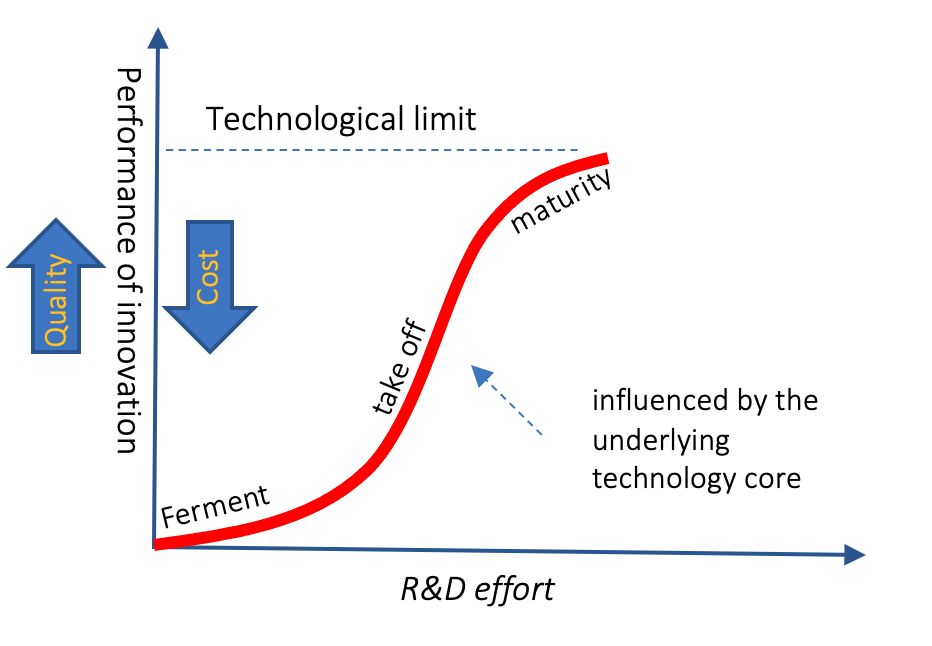Is “it” all about to change?
February 13, 2023

The first question is what is IT? We say that all the time.
When we consider the emergence of AI (General and Generative), the question isn’t if this technology will change our lives, but rather where we are on its S-curve. Reflecting on the past 150 years, we’ve seen numerous S-curve life cycles. The most recent significant curves included the internet and the mobile phone, which have now reached their mature and stable stages. No one is camping out for the next iPhone release or fretting over the next-gen website. These are at the end of the cycle. So, where do we stand with General AI and Generative AI?
This post arises from the sudden surge of interest and applications surrounding ChatGPT (Generative AI and not General AI) . It’s a good moment to ponder our position on the AI curve.
So, where are current technologies on This Curve? What changes are on the horizon? Is effortless coding and general writing and test-taking a thing of the past? Will innovative Python programming still be relevant? Could the traditional Google search be replaced by direct answers from Generative AI? Is the act of pen to paper (or fingers to keyboard) for general simple things going the way of the abacus in favor of the calcular?
S-Curve MATURE Technologies:
• Cars: From the first automobiles to today’s advanced models, cars have revolutionized transportation and our way of life.
• Electricity: Initially a marvel, now an essential part of daily life powering everything we use.
• Manufacturing: Transitioning from manual labor to automated production lines, manufacturing has become more efficient and scalable.
• Computers: Once room-sized machines, now powerful personal devices that fit in our pockets.
• The Web/Internet: From static web pages to interactive, dynamic content, the internet has connected the world.
• Mobile Phones: Evolved from bulky devices with limited functions to sleek smartphones that are indispensable.
• Education: The shift from traditional classrooms to online learning and beyond.
• Search: The shift from traditional classrooms to online learning and beyond.
S-Curve TAKE OFF Technologies:
• Generative AI: Chat GPT, Code/Programing assistance, Photos Generation and Edit, Mini-Movies,
• Specialized AI: Used in specific applications like facial recognition, autonomous driving, and personalized recommendations.
• Orbital Space: Private companies are making significant strides, but widespread space travel is still developing.
S-Curve Early Technologies:
• Genome Editing/CRISPR: Potential to revolutionize medicine and agriculture with precise genetic modifications.
• Free Power: Innovations in renewable energy sources and technologies that could lead to sustainable, widespread access to free power.
Not Yet on the S-Curve
Space Travel/Multiplanetary Exploration: Human settlements on other planets are still in the conceptual phase (There are designs and movements toward this on spacecraft but not the full set of all the necesary tech for us to be Multiplanetary species)
• Understanding Consciousness: We are still far from understanding, creating, or replicating consciousness in machines.
Quantum Computing: Although there are promising developments, practical and widespread applications are still in their infancy.
• Advanced Robotics: While robots are used in various industries, fully autonomous and versatile robots capable of performing a wide range of tasks like humans are not yet realized.
• Nanotechnology: The potential for nanoscale devices to revolutionize medicine, manufacturing, and other fields remains largely untapped.
• Teleportation: Despite theoretical research, practical teleportation of matter remains a distant possibility.
• Artificial General Intelligence (AGI): Achieving a level of AI that can perform any intellectual task that a human can is still a long-term goal.
